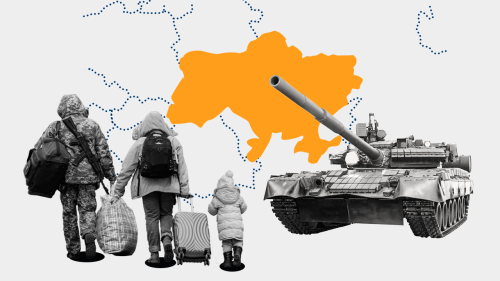EXCERPT
Onlookers watched and waited as the deadline for a Kirkuk referendum passed on December 31, 2007. Often described as the next “powder keg” in Iraq, the issue of Kirkuk’s status has gripped the nation, its neighbors, and the international community. Kirkuk is the most hotly-contested of Iraq’s disputed territories, because of both its tortured history and what it represents in the “new” Iraq. Much of the current discussion around Kirkuk’s status is focused on the proven oil reserves there. Some observers, Ankara most significantly, believe that the Kurdish region’s potential to thrive independently of Baghdad will be determined to a great extent by its access to Kirkuk’s oil resources. If the Kurdish Regional Government (KRG) does win control, so the theory goes, Turkey, Syria, and Iran could eventually be faced with a more robust Kurdish entity in their backyards. However, access to and management of Kirkuk’s oil wealth will continue to be debated until the country can agree on a new oil and gas law. Probably more critical to Iraqis is that Kirkuk is home to multiple communities in Iraq, several of whom were systematically expelled from the region under the Ba’ath regime. Since the regime’s collapse, many of these families have returned to the demographically-altered province, and new patterns of displacement are emerging. There are multiple and competing visions for Kirkuk among its Kurdish, Arab, Turkmen, and Christian inhabitants. The referendum, and subsequent determination of the Kurdish region’s borders, will likely impact both the shape and character of a future Iraq.
The referendum is of consequence because it is linked to the expulsions and forced population transfers conducted by the previous regime. The disputed territories, stretching from Khanaqin in the east – through Kirkuk and Mosul – all the way to Sinjar in the west, are sites of untold violence and human rights abuses. This “mixed-population belt”[1] was a target of Saddam Hussein’s Arabization campaigns and Operation Anfal, both of which sought to permanently alter the ethnic demographics of these oil-rich lands. During the Arabization campaigns, some 250,000 Kurds and other non-Arab minorities were displaced from this territory and replaced by Arabs from central and southern Iraq. The Operation Anfal of 1988 was an ethnic cleansing campaign in which 100,000 Kurds were killed and other hundreds of thousands were rendered homeless.[2] The program of Arabization continued in Kirkuk until the eve of the Ba’ath regime’s toppling; throughout the 1990s, Kurds and other non-Arab Kirkukis continued to face harassment and pressure to change their ethnic identity and join the Ba’ath party.[3] During this period, 120,000 persons were driven out of Kirkuk and other territory under Baghdad’s control.[4]
The status of Kirkuk is significant in that Kirkuk is a heavily populated, multiethnic region, teetering on the brink of turmoil, and straddling the country’s ethno-linguistic fault line. Failing to reconcile the competing interests and property claims in Kirkuk and other disputed territories and failing to establish a system of compensation for expelled Kurds, Turkmen, and Christians, could lead to further destruction and chaos in a country where one out of six people has already fled his or her home.[5] If hostilities continue to intensify in Kirkuk, massive displacement and ethnic homogenization could materialize, along the lines of what occurred in Baghdad post-February 2006. This is an area with a violent history of dislocations, settlements, and returns, in a governorate that has been redrawn to facilitate gerrymandering and ethnic exclusion. The politics of demographics is not a new phenomenon to Kirkuk, but it continues to impact conditions on the ground and political developments at the highest level. The on-going struggle for Kirkuk cannot be understood except in the context of the country’s human security and historic patterns of displacement.
[1] International Crisis Group, “Iraq and the Kurds: The Brewing Battle over Kirkuk,” Middle East Report, no. 56, 18 July 2006.
[2] David Romano, “Whose House is this Anyway?: IDP and Refugee Return in Post-Saddam Iraq,” Journal of Refugee Studies Vol. 18, No. 4, 2005.;“Iraq: Forcible Expulsion of Ethnic Minorities,” Human Rights Watch, Vol.15, No.3, March 2003. Human Rights Watch, “Claims in Conflict: Reversing Ethnic Cleansing in Northern Iraq,” Vol. 16, No. 4, August 2004.
[3] Human Rights Watch, “Claims in Conflict: Reversing Ethnic Cleansing in Northern Iraq,” Vol. 16, No. 4, August 2004.
[4] Ibid.
[5] Karen DeYoung, “Balkanized Homecoming,” The Washington Post, 16 December 2007. http://www.washingtonpost.com/wp-dyn/content/article/2007/12/15/AR2007121501921.html?hpid=topnews


